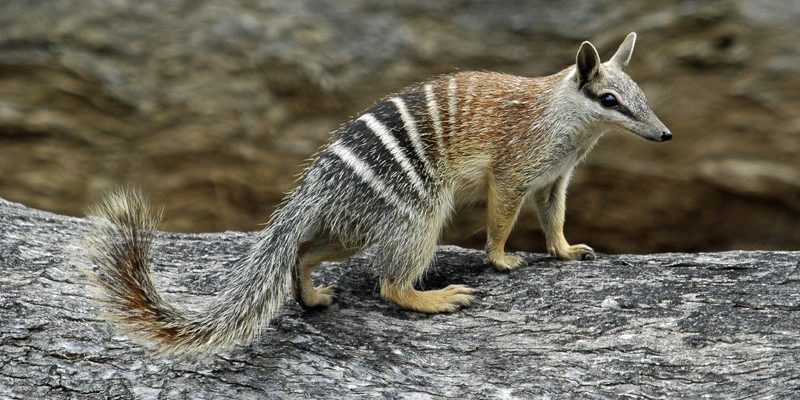
Numbats are specially adapted to live in Australia’s arid environments, utilizing both their physical traits and behavioral habits. As we explore how numbats survive in harsh surroundings, you’ll see how these little animals embody resilience and adaptability. Whether it’s their diet, habitat choices, or social behaviors, each aspect plays a vital role in their survival story.
The Numbat’s Unique Habitat
Numbats primarily inhabit woodland areas and savannas in southwestern Australia. These habitats are characterized by dry conditions and scattered trees. Think of it like a patchy quilt of tree cover, where numbats can find shelter and food but must also navigate the challenges of limited resources. The trees provide essential shade during relentless sun but are also crucial for hunting down their favorite snacks.
You might be wondering what makes these habitats so fitting for numbats. Well, unlike many other marsupials, numbats are primarily diurnal, meaning they’re active during the day. This gives them the advantage of foraging for food when temperatures are cooler and predators are less active. Numbats have evolved to thrive in environments that may seem harsh at first glance, showcasing how adaptable they are.
Besides their choice of habitat, numbats also rely on dead trees and fallen logs. These provide not only a shelter but also a hunting ground where they can find insects hiding in the bark. It’s like living in a cozy little bungalow packed with delicious snacks!
Numbats’ Diet: An Ant-astic Adventure
One of the most interesting things about numbats is their specialized diet. They primarily feast on termites and ants. Imagine having a buffet of tiny winged delicacies available at your doorstep! Numbats have evolved to hunt for these insects effectively, using their long, sticky tongues to slurp them up. This adaptation is crucial, especially when food availability can fluctuate in their harsh environment.
To find food, numbats use their keen sense of smell. They can sniff out termite mounds from a distance, similar to how we might catch a whiff of freshly baked cookies. Once they spot a mound, they go to work—digging and using their strong claws to access these little protein-packed delicacies.
However, their diet does come with some challenges. When food is scarce, numbats must travel further to find their meals. This can be tough in harsh conditions where energy is already low. But here’s the thing: numbats have adapted to this too. They can store fat reserves, helping them survive periods when food is not as plentiful.
Water Conservation Strategies
In harsh environments, water is a precious resource, and numbats have some nifty tricks up their sleeves for conserving it. Unlike many animals that need regular drinking water, numbats get most of their hydration from their food—especially the juicy termites and ants they consume. It’s like having a snack that also doubles as a refreshing drink!
Additionally, numbats have efficient kidneys that help minimize water loss. This adaptation allows them to thrive in dry climates where water sources might be few and far between. Think of it this way: numbats are like tiny desert survivors, making the most out of every crumb to stay hydrated.
Numbats also seek out cooler spots during the hottest parts of the day. By burrowing under logs and vegetation, they can escape punishing sunlight. This behavior not only helps them stay cool but also conserves energy, ensuring they don’t overheat while searching for food.
Social Behavior: Living in Small Groups
When it comes to social structures, numbats tend to be somewhat solitary, but they do form loose family groups. These groups offer some advantages, especially in communicating about food sources and potential threats. Picture it like a small neighborhood of friends looking out for each other.
The social interactions among numbats can be quite fascinating. They often engage in grooming behaviors, which helps reinforce bonds and ensures that each member stays healthy. You might say they’re like a tight-knit community, relying on each other for support in a challenging world.
Interestingly, while they’re mostly solitary, numbats can also come together during the breeding season. This social flexibility allows them to increase their chances of passing on their genes, ensuring that future generations can continue to thrive in their harsh environments.
Predators and Defense Mechanisms
Every animal has its share of predators, and numbats are no exception. They face threats from birds of prey, foxes, and even domestic pets. Their survival tactics go beyond just hiding and hoping for the best. Numbats have developed several defense mechanisms to evade these dangers.
One of their primary defenses is their speed. When threatened, numbats can quickly dart away to find cover. They’re quite agile, which helps them navigate through the underbrush and avoid being spotted by predators. It’s like having an escape plan they can execute at a moment’s notice.
Additionally, their coloration plays a role in camouflage. Numbats have a blend of browns and grays that help them blend into their environment, making it less likely for predators to spot them. Many times, you might not even notice a numbat until it’s already scurrying away!
Lastly, their ability to burrow quickly provides them with a safe retreat. In a flash, they can disappear into the leaf litter or find a cozy spot under a log, leaving potential threats baffled.
The Impact of Climate Change
As resilient as numbats are, they aren’t immune to the effects of climate change. Increased temperatures and unpredictable rainfall patterns can impact their habitats and food sources. This can lead to shifts in termite populations, putting additional pressure on the numbats to adapt.
You might be asking yourself how this affects their survival. As their habitats change, numbats may need to migrate to find suitable conditions or face the risk of declining populations. Scientists and conservationists are closely monitoring these changes to ensure that we don’t let these unique animals slip away.
Moreover, restoring their habitats and preserving existing woodlands is crucial. Efforts to create wildlife corridors can also help numbats move safely between areas. It’s like giving them a safe highway to navigate between essential resources without putting them in danger.
Conservation Efforts and Future Prospects
Fortunately, there’s hope for numbats! Various conservation programs are actively working to protect their habitats and increase their populations. This includes habitat restoration, predator control, and education to raise awareness about these charming creatures.
Rescue programs often focus on breeding numbats in captivity and then releasing them into protected areas. It’s like a well-planned reunion where they get a second chance at life in the wild. These efforts are crucial for ensuring that future generations can experience the wonder of numbats in their natural environments.
Community involvement is also key. Local groups often participate in tree planting or clean-up efforts that contribute to a healthier ecosystem. Each little action counts, helping to create a better environment for not just numbats but a range of wildlife.
Numbats remind us of nature’s incredible adaptability, and with concerted efforts, we can help ensure these little survivors continue to thrive in their harsh home.
In conclusion, numbats are not just cute little critters; they embody the essence of survival. From their specialized diet to their savvy social behaviors, they teach us about adaptation in the face of challenges. Every small action toward their conservation is a step to ensure that these remarkable animals thrive in the wild for years to come. So, the next time you think about the struggle for survival in harsh conditions, remember the numbat and its incredible story of resilience.

